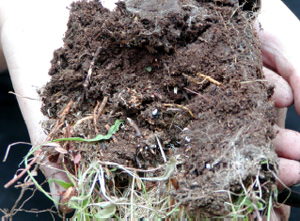Summary
Investigator: Deborah Henderson, ES Cropconsult, Vancouver, British Columbia
Project locations: British Columbia and Oregon
The primary challenge to cranberry production in Oregon, Washington and British Columbia is insect pests which are able to survive the mild western winters. Disease pressure is high for cranberry production in other areas but less so on the west coast, making it more feasible to grow organic cranberries in this area. Weeds are difficult and even for the conventional growers, hand weeding is often used. There are few tools available for organic management of insects in cranberries and, according to one of our collaborators, those that are available (e.g. Pyganic) do not provide satisfactory levels of control. While there has been a considerable amount of research on different biological methods for controlling key pests, none of this research has been carried through to develop a management program that organic cranberry growers can follow.
The objective of this study is to first identify suitable tools for management of the three key regional cranberry insect pests: blackheaded fireworm, cranberry girdler and black vine weevil. A second goal is to develop an integrated pest management (IPM) program for these pests using the most effective tools identified. As part of this IPM program, specific guidelines will be developed for how to use biological controls and compliant materials under the unique circumstances of cranberry production. The bulk of the trials for this project will be conducted on commercial certified organic farms.Protocols include:
1. Blackheaded fireworm:
- Evaluate the use of Trichogramma sibericum for spring generation blackheaded fireworm eggs
- Efficacy trials with Entrust. Develop guidelines for use via irrigation system if possible
2. Cranberry girdler
- Evaluate the efficacy and application methods of the commercially available Metarhizium anisopliae strain Met 52, with and without additional products to improve efficacy (e.g. diatomaceous earth)
- Develop an effective strategy using commercially available nematode species and ways to deliver appropriate dose to the target area under various field conditions
3. Black vine weevil
- Evaluate the efficacy and application methods of the commercially available M. anisopliae strain F52 with and without additional products (e.g. diatomaceous earth)
- Compare the efficacy of commercially available nematode species and develop a strategy for monitoring of pest and timing of applications.
Our growers, especially those wanting to transition to organic, have indicated to us that all of the potential biological solutions for these three pest need to be examined not just for efficacy but for ease of use and cost effectiveness within the cranberry system. Information from growers and researchers in other areas where organic cranberry production is active (e.g. Quebec) will be gathered and applied when appropriate. We are in contact with these groups on a regular basis and occasionally collaborate on research.

